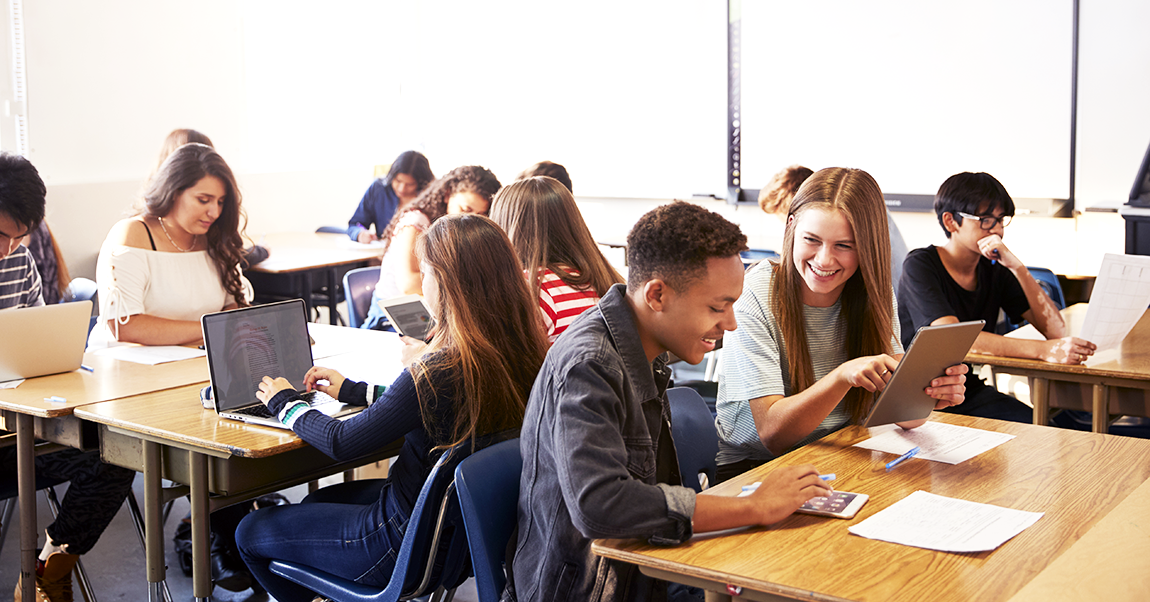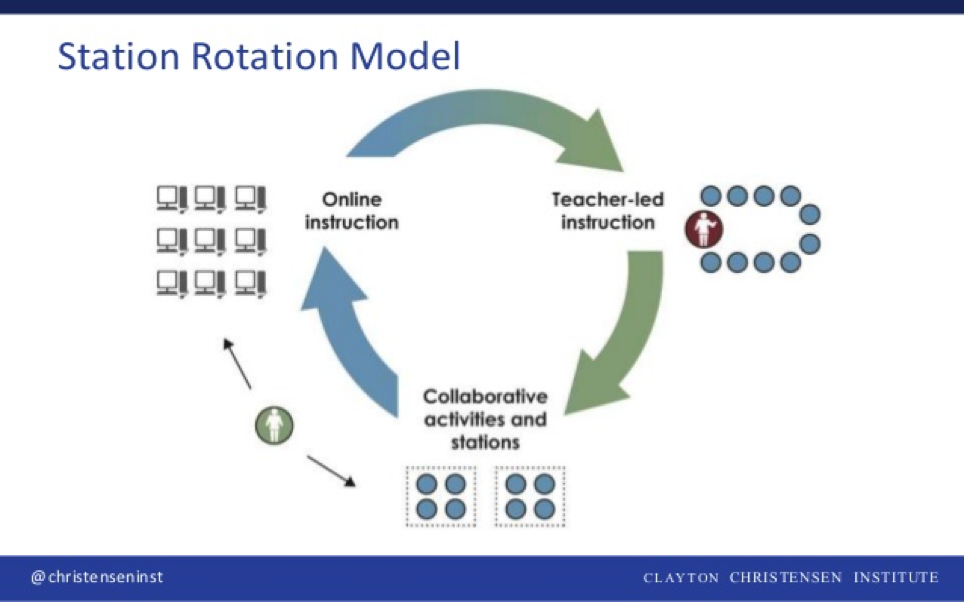
When working in a PBL classroom, differentiation is a must.
Every student needs appropriate scaffolds to meet the standards and requirements of the project. How do you teach new skills within a project while simultaneously scaffolding and differentiating? Sometimes it feels like you need to clone yourself or even have three teachers in one class in order to meet the needs of all of your students.
Utilizing a station rotation model within projects can help teachers meet these demands. Using this model has truly helped me to maximize project work time as I am able to tackle three goals at once:
- Provide remediation for students that need support to meet project standards through online programs.
- Provide mini-lessons that are critical to building knowledge needed for the project through direct instruction.
- Build student collaboration skills as they work on project components in teams.
The Christensen Institute has conducted extensive research on what blended learning models work best. They describe Station Rotation Models as courses where students rotate between online instruction, teacher led instruction and collaborative activities. This approach allows PBL teachers to truly operate as facilitators and provide more support for students at all levels.

When I use a station rotation model in my PBL classroom, I structure the timing to ensure that students can do meaningful work at each station.
For example, in a 90-minute block, students may spend 25 minutes at each of three stations, which allows time for transition and instructions. Here’s one example of the stations I might use in project work time.
Station 1: Online Instruction
Depending on the number of devices, there are a variety of ways to implement online learning within a project-based setting:
- 1 to 1 device: Students could utilize a flex blended learning model in which they are working independently or in groups on a set of activities. The teacher is then able to hold small group conferences, pulling a subset of students for direct instruction based on their needs.
- Limited devices: Students could rotate through a station in a set time interval (20 minutes, 30 minutes, etc.), one of which is a technology station. At this station, students could work on a blended learning software that is designed for enrichment or remediation.
Station 2: Conducting Mini-Lessons with Teacher-Led Instruction
Station rotation models give teachers an opportunity for small group instruction, as well as opportunities for formative assessment. For example, during my teacher-directed station, I may give a quick 10-minute lecture on a topic essential to the project. After some discussion, we use this station to also do a quiz or a writing activity. Within this small group, I have found that students are more willing to speak up and ask questions as opposed to when they are in the larger group of students.
Station 3: Keeping Student Groups on Track
In my own classroom, I have found much success in creating weekly “Mastery Trackers” that enable students to check off tasks/activities when they work in groups or independently. Items on their tracker might include a primary source analysis at the independent station, or a quiz in the small group station, or a group meeting about their project.
One key that I found to be useful in using a mastery tracker was to purposefully integrate project milestones with descriptions so students could work independently without my direction. Once students truly understood the process of the rotation model, my expectations, and how to use their mastery tracker, my class was essentially automated, giving me more time to work with students that needed the most help.
The station rotation model may not be useful for every project, but certainly can be very helpful for differentiating support for students.
